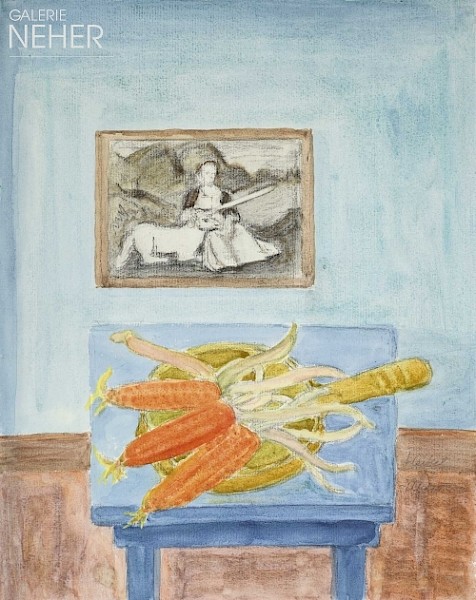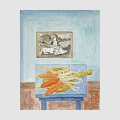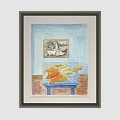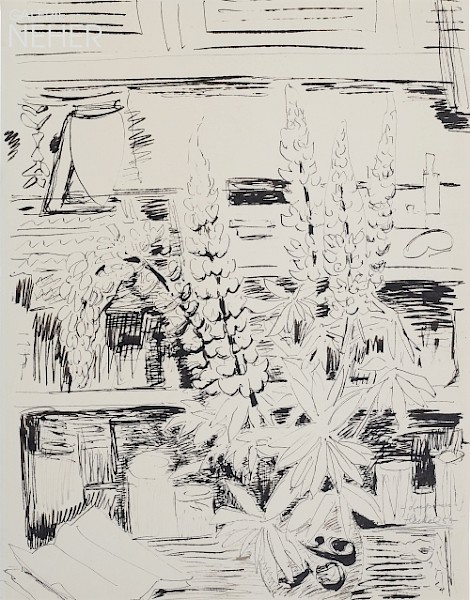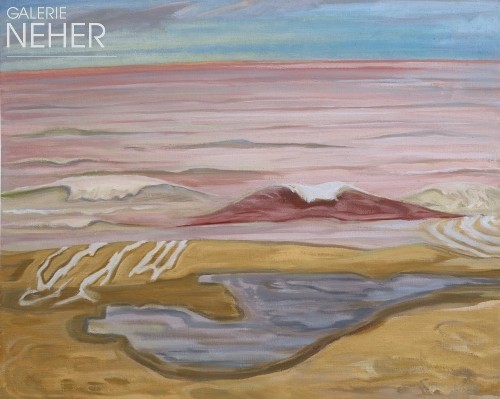About the work
The watercolour "Mais" originated in connection with the painting of the same name from 1963/64, which is still found today in the Heckel estate in Hemmenhofen. It is one of the last four paintings on canvas completed by Erich Heckel. Another watercolour with the title "Mais II (Corn II)" from 1967 is today found in the Brücke Museum in Berlin, and there is also a colour lithograph from 1968. This sheet is thus Heckel’s first attempt at this pictorial subject.
The three cobs of corn shucked from their shell of leaves are imposingly positioned on a yellowish board in the middle ground of the painting. Also characteristic of the late work of Heckel is the reduction of the pictorial space to the essential found here. The expressive power of the work is still based on the complementary contrast between the intensive blue table - supported by the lighter shade of blue on the wall - and the intensive orange colouring of the cobs of corn. A painting is recognisable on the wall in the background. The work “Woman with Unicorn” from 1510 (Rijksmuseum Amsterdam), formerly ascribed to Giorgione (1478 - 1510), presents a Madonna-like woman with a unicorn and is considered an allegory of chastity. The unicorn as viewed as a symbol of goodness, it stands for purity, innocence and freedom, but also for remaining true to oneself and liberating oneself from old constraints. A black and white illustration of this painting is still found in Erich Heckel’s house today.
Text authored and provided by Dr Andrea Fink, art historian
The art historian, curator and freelance publicist Andrea Fink studied art history, cultural studies and humanities, modern history and philosophy in Bochum and Vienna. Doctorate in 2007 on the work of the Scottish artist Ian Hamilton Finlay. As a freelance curator and art consultant, her clients include, among others, the Kunstverein (art association) Ahlen, Kunstverein Soest, Wella Museum, Museum am Ostwall Dortmund, ThyssenKrupp AG, Kulturstiftung Ruhr, Osthaus Museum Hagen, Franz Haniel GmbH, Kunsthalle Krems, Austria.
